Owning a balanced system has been high on the list of headphone enthusiasts, and one of the first things that deter people from going fully balanced has been the cost associated with good balanced sources. Not many sub-$1,000 CD Players come with balanced analog outputs, and popular balanced DACs like the Lavry DA11 and the Benchmark DAC1 USB is upwards of $1,000. Good DACs have always been expensive, and $1,000 often is considered as entry level. Yet the technology has been getting cheaper and cheaper, and suddenly we find an abundance of good DACs for a computer or headphone system in the $100-$300 price range. They certainly won’t compete with a high end offering from dCS or the other big boys, but it’s quite enough to provide most headphone users with a great sound quality for their headphone system.
Enter the Matrix Mini-i Balanced DAC. A relatively good looking DAC from Chinese manufacturer Matrix that sells in eBay for $330. It does look a lot like the Bel Canto products, so much that I found a short review on coolfungadget’s eBay shop comparing the Matrix Mini-i to a Bel Canto DAC-3 that sells for about $2,500. Well, looking good has always been an advantage, and the Matrix Mini certainly has that edge. But aside from the little known Matrix name, and the Bel Canto design, how does the Mini-i actually perform for the price range?
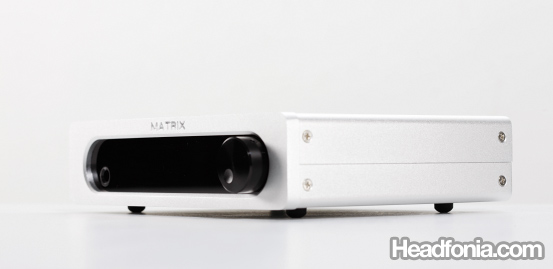
The Matrix Mini-i in Silver. It’s also available in Black.
The Matrix packs an abundance of features into the $340 package. Dual AD1955 D/A chip, digital volume control, digital LCD display, balanced and unbalanced outputs, independent system clock, S/PDIF, AES/EBU, and USB inputs, as well as a built-in headphone amplifier. Even without knowing anything about the sound, I would not mind paying $340 for the Mini-i.
Design and build quality is certainly very good, as the Bel Canto design with the large display panel looks very attractive, and is actually fairly well executed by Matrix. The volume control is a 90 steps digital control, and the volume knob has a very subtle, yet tactile, micro-click that feels more refined than the DACT attenuator on my Beta22. Every click on the knob changes the volume by 1dB increments as indicated in the display panel.
The volume knob also functions as a push button to function as an input selector between the four inputs available in the Mini-i: BNC (or Coax with the supplied adapter), Toslink, AES/EBU, and USB. The display panel is monochrome, and while the resolution won’t support any graphics or image displays, it actually feels very at home in the hi-fi circle, as a lot of high end sources come with monochrome displays not far from the quality found in the Mini-i. The display itself does a great job in the Mini-i, displaying information related to the functions of the DAC:
1. The current active input
2. Sample rate
3. Volume level
4. Time display information
The time display information (#4) is actually quite interesting as I don’t see it implemented in other DACs. When you connect it with a CD Player that supports the Q-sub code protocol, the Matrix will display the time information on the CD that’s playing in the hours-minutes-seconds format, just like what you often found in CD-players.
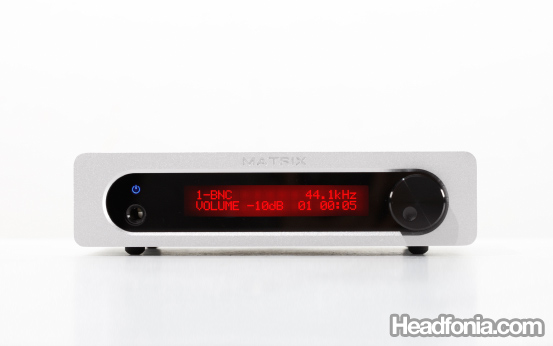
The LED display panel displaying source, sample rate, volume, and track time information when connected to a CD-player.
Operational is very easy and intuitive as it only requires you to push the button for the appropriate input that you want to use, and other than that you rotate the knob to control the volume. With the LED display panel, the Matrix Mini-i has the best user interface among all the other sub $500 DACs I’ve come across. By default the volume knob will change the volume on both the headphone out and the line out, and if you press and hold the volume knob while turning on the Matrix, you will have the option to turn off the volume control for the line out, although that also disables the headphone out.
The Matrix Mini-i is equipped with two Analog Devices AD1955 D/A chips that support up to 24 bit and 192kHz through its S/PDIF and AES/EBU inputs, though USB input is limited to 24 bit and 48kHz. There is also a coaxial output that will pass-through the digital signal, including AC-3 and DTS outs. Two OPA2134 is placed at the output of the AD1955, and a TPA6120 is used for the internal headphone amplifier.
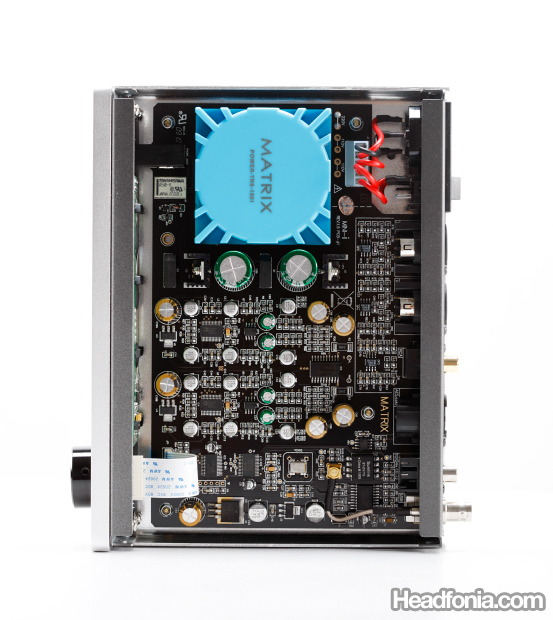
The internals are very clean in layout.

Left to right: TPA6120 Headphone Amplifier, dual OPA213 amplifiers, and dual AD1955 D/A chips.





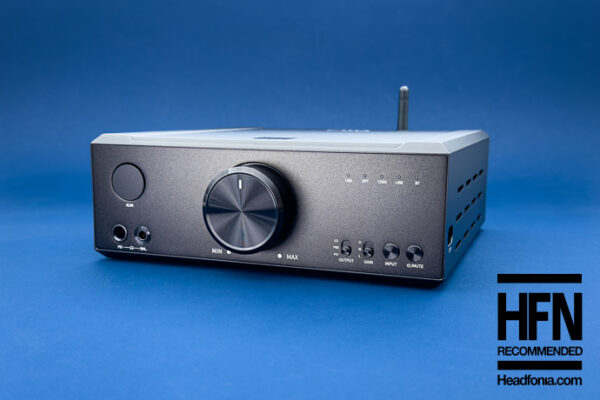
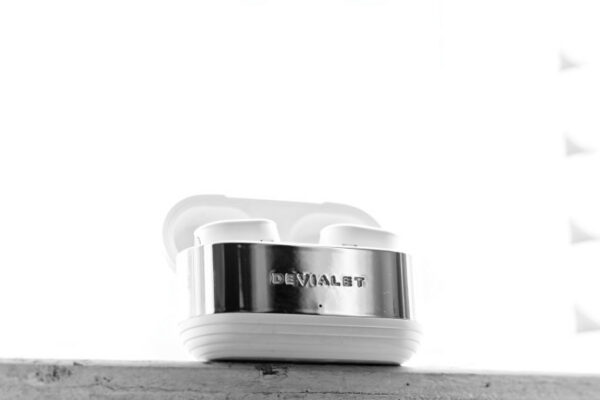
Earfonia
Oops sorry, Pico DAC has no headphone out 🙂 so just between the AudioTrak DR.DAC2 DX, Matrix Mini-i Balanced DAC 😀
Mike
Hi, Bram. Both the Audiotrak and the Matrix are superb with different flavors. If you want something more neutral, go with the Audiotrak. If you want a more engaging sound, go with the Matrix. It all depends on the music and the headphone that you’re using.
Earfonia
Thanks Mike! Thinking to get the Audiotrak, since the Op-Amp is rollable, we have some degree of freedom to change the sound signature 😀
Mike
Yep. That is right. You can always use an opamp with some midrange flavoring to get a sweeter sounding sound. 😀
CoolFunGadget
Thanks for the nice review! Now this DAC is on sale for $323 only at http://coolfungadget.com/.
Earfonia
As always, excellent review Mike! :thumbs up:
So for under $400, which one you will choose for general music listening, without additional headphone amplifier, the AudioTrak DR.DAC2 DX, Matrix Mini-i Balanced DAC, or Pico DAC?
Or maybe I shouldn't ask that question at all 😀
Burgunder
Too bad the review wasn’t just a bit more positive then I would have bought one right away. BUt now I will probably wait until the end of the summer before I upgrade from the µDAC/EF2 combo that I’m using now.
Mike
The uDAC & EF2 combo should be a good one. 🙂
Burgunder
Yes it's a nice combo and I'm using it right now a long with a pair of AKG K400s' and Ornette Coleman. But a some point I want to upgrade the DAC.
Alfon
Great review mike 🙂
but can you add more a bit about the comparison between this $400 DAC with maybe $1k DAC (like grace/davry)?
Mike
Just a short comparison based on memory. The Lavry DA11 is far superior in technicalities. It is one of the best when it comes to creating a superb imaging. Even the HD650's fuzzy imaging suddenly becomes quite sharp when plugged in to the Lavry. The sonic signature, however, is very deep into its professional roots for monitoring use. Hence you won't find the more musical flavoring of the Matrix Mini-i, whjch is clearly a more audiophile-centric DAC.
The Grace's DAC is also a monitoring DAC in sound signature. Its DAC section is not as good as the Lavry, but it has a more refined headphone amplifier section.
BassMonster
How's the synergy between the Edition 8 and the Matrix headphone out?
Mike
The Ed.8 is quite versatile in its sound. I think the Matrix will help to give a fuller midrange on the Edition 8, so that can be good. Anyway, for the Edition 8, a lot of the sinergy factor depends on your music. Vocal heavy? Pop? Rock? Electronica? They would require different set ups.
Scrivs
What exactly is your opinion on the Mini-i's headphone amp on its own?
I know that you've told me before that the Dr. DAC2 DX's amp gives a rather neutral sound and that the mini-i has a slight boost on the lower end, but I'm still having doubts…
Because I've read several times on other forums that the mini's amp is actuall a bit mediocre and that most of the people that own the mini-i eventually move on to a seperate amp that is just slightly better than what the mini-i has to offer…
This is what keeps me from buying the mini-i at the moment, because what I'm looking for is a good DAC that also comes with a headphone amp that suites my headphone (Ultrasone 780) well and that would last me for whatever time to come.
Ofcourse I will be moving on to a better setup eventually, but I dont want to have to buy a seperate headphone amp on top of the mini-i DAC because the mini-i's amp just doesnt quite does it for me…
Or do you think otherwise?
Mike
Hi Kevin, I think the built-in amp on the Matrix Mini-i is fine for your purposes. It is true that a separate amplifier can always be better. Even the Lavry DA11, and the Benchmark DAC1, both costing over $1000 is quite "limited" in their headphone amp, once you start bringing in a separate amplifier equipment. So there is no point trying to find a DAC with a top-grade headphone amp section, cause they don't exist.
Having said that, the Matrix's amp is great and I think you would be enjoying it with the HFI-780.
Bill B
Mike,
Nice review! How do you feel the Matrix compares to something like the Little Dot DACII? I'm looking for an all-in-one solution with an optical input to feed AIFF files via an airport express for a bedside rig with a pair of Sennheiser HD600.
Bill
Mike
Hi Bill, I honestly have never auditioned the Little Dot DACII, but just by reading the specs, I think it should be fairly comparable to the Matrix.
John R
Mike,
I'm in the market for $300-400 DAC and have read your reviews with much interest. I'm actually looking not just to hook up to my headphones (low impedance Grado SR-225s which can be driven without much trouble), but also to my hifi system (Aragon powering Vandy 3A Sigs).
I'd love to read your thoughts on other DACs in the price range such as the Beresford Caiman if possible for you to get a copy to review.
Mike
Hi John, I will try to look into the Beresford. I can't promise anything though. Thanks for the suggestion. 🙂
Mampus
Mike, have you tried the Matrix with BNC connection? 😀
Mike
Yap. There is no RCA coax, so you have to use the RCA to BNC adaptor.
Puk
The subject of this article was .. what?
came here to read something about the mini-i, but it seems that you prefer to write about other stuff.
but a good read 😉
Mike
Hmmm… I need to polish up my writing skills.
Thanks for the comment.
Oid
Mike,
Great review. I was just wondering if you've tried connecting the i-Mini to a Mac?
I am trying to find out whether or not it's possible to adjust left/right balance when the i-Mini is connected through USB to the Mac, using the Sound control panel …
Some DACs can do this, some can't. Any ideas?
Mike
Whoa, I really didn't try doing individual left/right controls via the Mac, but I did use the Mini-i connected via USB to the MacPro.
David
Quick question, so which one has the better headphone amplifier, the matrix or the dr.dac2 dx. I know the dr.dac has two headphone jacks, but in terms of quality which one do you think is better?
Mike
They're roughly about the same quality. External headphone amps would be better, but they're also fine if you want a minimal set up.
David
Thanks Mike, any amps that you recommend? I think you said the Im Amp sounded better than both of these, although I'm not a fan of the battery/portable features.
Mike
Hi David, the Burson is a good amp to get. http://www.headfonia.com/?p=5439
Zorlac
Does the display properly show every supported sample rate? (i.e. 44.1kHz, 48kHz, 96kHz, etc.)
Mike
Hi Michael,
I don’t think I tested every sample rate, but I think it works fine between 44.1, 48, and 96.
gabriele
hi my name is gabriele from florence, italy.
now i tell you my experience with this dac,
i have a little mastering dream(it’s like i love to call it) http://www.myspace.com/cele_nogravity
i read some fantastic rewiews about the mini -i, so i bought it.
when it arrived, i immediately understood that the unit was built very well, but the problem was that it played much less than my apogee rosetta 200, linx two and lucid 88192 converters( about -6 db).
the sound quality was good, but the volume comparison was impossible.
if i played a 0 db signal inside the mini-i from my wavelab software, I saw in my metering sistem more or less -6db.
i asked to the seller if the unit had consumer setting also on the two xlr connections, but the answer were not just sufficiently
i wrote a lot of mail to the seller where i explained the problem, but the only solution was send it to him and take the total refund.
have you some similar experience or not?
gabriele
Mike
Hi Gabriele, that's quite unfortunate. Different DACs seem to have different output levels, and I've sort of accept that as a fact of life.
Brandon
Which has the better DAC and is more neutral, the Yulong D100 or this?
Anonymous
Sorry havent heard the Yulong, but the Matrix is darkish and is not exactly neutral. The Dacmagic is more neutral.
Elie Hendriks
If you would have the time, it would be awesome to also have a review of the Matrix Cube, and maybe a comparison to the Mini-i. I think CoolFunGadget also has these on his webshop.
kurniawan
Hi Mike, i have a quick question, based on just DAC, which one do you think is better? the mini-i or audinst ?
Anonymous
Mini-i should be better. Dual AD1955s if I remember correctly.
Guest
Any chance of comparing the Mini-i to the Yulong U100 or Matrix Cube? Which would be better to match with an HD598 or HD650?
Anonymous
No plans for now but the HD598 and the HD650 is very nice with the
Yulong U100. Make sure that you are using Windows though as the U100
doesn’t work properly with a Mac.
Guest
Just to clarify, I don’t have either yet. I could get the HD650+Yulong U100, but I’m really not comfortable dropping $400+ only to see a “HD658” come along 6 months later. So I’m considering getting a HD598 and using the extra cash to get a better DAC/amp box to prepare for an eventual HP upgrade.
So I guess it boils down to: Are the Matrix Mini-i or Cube better than the Yulong U100? This is for Classical, so soundstage, imaging and tonality are paramount.
Thanks.
Anonymous
I have never done a direct A-B so I can’t say.
Sorry
Harry Trieu
Are there any stores in the US that sells the Mini-i? Or are my only options the Chinese stores on eBay?
Anonymous
Tam’s audio is based in China, I think, but they sell to US customers.
http://tamaudio.com/store/
Harry Trieu
Thanks! How reputable is this store? Any experience buying from them?
Anonymous
They should be pretty reputable. I think they are a sponsor in Head-Fi, and they’ve sent me demo units in the past as well.
Asperg
Mike!
Thx for great review. Is there any chance to use mini with senn 650 ? Yulong U100 would be my 1st choice, but i need more in/outputs
Or should i buy better HP amp, like darkvoice 336SE
Anonymous
Yes you can use the Mini-i with the HD-650.. but I think the synergy is better with the Yulong.
Andr4000
Anybody knows why Mini-i doesn’t support 24bit via usb?
Windows install driver 16bit 44.1khz,48khz. In Mini-i ‘s manual it support 16-24bit up to 48khz.
Matt
Hey Mike, great site with informative reviews!
Since you mentioned the volume knob also adjusts the balanced XLR output, is it possible to directly connect a balanced HD 650 to this input (without an amplifier)?
Thanks in Advance
Anonymous
You can, but it’s not designed that way so you will lose bass impact and perhaps a little of the top frequencies.
Matt
Thanks for the prompt reply, so the headphone out would give a better sound quality in this situation?
Anonymous
Yes.
Michael T
Hi Mike. Bit of a newbie question, but how can I integrate this to my home theatre system? I use a Yamaha AVR, which hooks up HDMI to my PS3, then another HDMI to my LED TV, with the AVR as the video switcher. I’m interested in the Matrix mini-i but I am unsure how to use this for headphone listening. Of course I still intend to use my loudspeakers when its not so late at night. The sound is ok from my Ultrasone Pro 2900 straight to AVR, but I want an amp to make it really shine.
Anonymous
Hi Michael,
You can connect the PS3 to the Matrix through the digital out (Optical) of the PS3: http://www.letsgomobile.org/images/reviews/0016/playstation-ps3-2B.jpg
Into the digital input (Optical) on the Matrix Mini-i.
Using one of these cables (or similar):
http://amzn.to/vhFz6b
Michael T
Thanks Mike. Will I be utilising both DAC and Amp when I run it via Optical on the PS3? Or will the DAC be utilised from the AVR?
Anonymous
You would be using the Mini-i’s DAC on that configuration.
And yes both the AVR and the Mini-i should be able to run simultaneously that way too.
Elie Imelda Rik
Do you think this would match up good with a Grado RS1i?
Stas Ka
Hey Mike,
I have Westone 3, Westone UM3x.
I am thinking about Dr Dac2, Matrix Mini i. Which would be better to match with these IEMs?
bjhess
Darn, I’m curious if anyone has the Pronto hex codes for this device. I have a Logitech remote which code replace my lost Matrix remote, but no codes to pass to Logitech support. 🙁
disqus_obgrXlKbUX
I like the style of this device. Is there a DAC like this that has an integrated RMS/peak sound level meter with LEQ on the display?
Mike
Sorry not that I know
Mischa
Great review, just like all the others 🙂 (I mean that. The reviews and comments really helped me out numerous of times). I have been rocking this machine with HS80M speakers and the SRH-840. Last month I moved out (student) and these speakers sound absolutely horrendous here. So I’m selling them and there is a HifiMan HE-400 on the way(hooray).
Do you, from your experience, think that the Matrix Mini I’s headphone amplifier is ‘good’ enough for the HE-400? Would I benefit a lot from an O2 or Magni, with the Matrix as DAC. Perhaps you have other suggestions. Balanced outputs maybe?
The information about the Mini I’s headphone amp seems a bit 🙁 on the internet..
Mike
Hi Mischa,
I really don’t have a clue how well the Mini-I will drive the HE-400, Sorry.